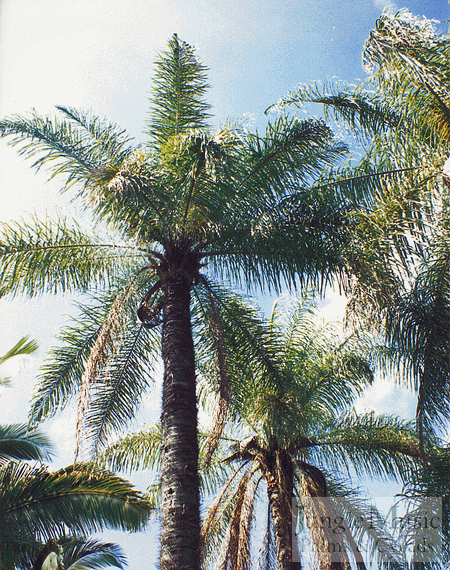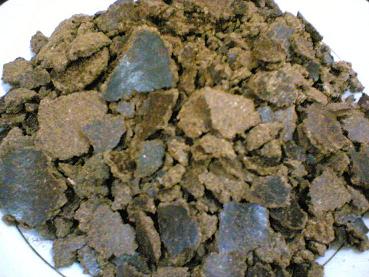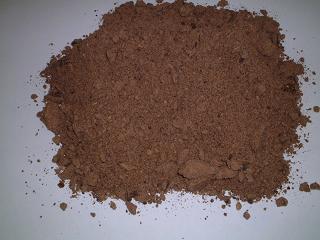Palm Kernel Expeller

-
Human use of palms is 5000 years or more ago. Certain palm trees produce a palm tree kernel or "nut" and palm oil is an edible vegetable oil produced by the oil palms in the genus Elaeis.
-
Palm Kernel Meal is a ground meal by-product left after palm oil has been extracted from the palm tree kernel. This material comes from the Asia/Pacific region.
-
Palm Kernel Meal is a high density meal that is also a good source of some minerals as phosphorus and magnesium.
-
The three main end products of the palm plantation business are Crude Palm Oil (for food), Palm Kernel Oil (for cosmetics, etc) and Palm Kernel Expeller (used for animal feed).
-
According to the Malaysian Palm Oil Board, palm kernel expeller "is also an important product from the oil palm industry that generate[s] substantial export earnings for Malaysia."
Defintions:
-
palm kernel - seed of any oil palm (palm nut)
-
palm oil - oil from nuts of oil palms especially the African oil palm
-
oil palm - pinnate-leaved palms of the genus Elaeis having dense clusters of crowded flowers and bright red fruit and yielding high quality palm oils
-
nut - usually large hard-shelled
Palm Kernel Breakdown

-
Palm Kernel is a source of protein (14%) and energy (12 MJ/kg dry matter) with a high fibre (16.5%) level widely used in ruminant diets.
-
It will contain some palm oil which is a hard oil, producing hard carcass fat. Not suitable for use on its own but often mixed with molasses to encourage intake. High inclusion levels can help to boost butter fat levels.
-
It has a characteristically mild and soapy aroma, is usually light brown in colour, and has a dry, gritty consistency.
-
The oil content of Palm Kernel means it has a beneficial effect on butter fat, and is overall a good source of energy and protein for ruminants.
-
By itself, palm kernel is not particularly palatable, but in mixes or sweetened with molasses, becomes readily acceptable.
Analysis (%)
Protein |
Oil |
Fibre |
Ash |
Metabolisable energy (ME) (mega joules/kg dry matter) |
Dry Matter (%) |
|
14 |
6 |
16.5 |
4 |
12 |
88 |
Source
-
Palm Kernel meal used by Protein Feeds Ltd. is normally of Indonesian-Malaysian origin.
-
Palm Kernel meal is derived from the African Oil Palm, grown largely in Asia and West Africa.
The benefits of using Palm Kernel Meal
-
Palm Kernel meal can be included at 10-25% of the total cows diet.
-
Palm Kernel meal provides extra protein and fat in summer when pasture protein and digestibility can be low.
-
Palm Kernel meal will help all stock gain and maintain weight and will raise milk fat test.
-
Palm Kernel meal can be used as by-pass protein source to help fertility and mating.
-
Palatability of Palm Kernel meal can be improved by using aniseed flavours and mixing
-
For winter milkers, Palm Kernel meal provides a cheap source of top-up dry matter to balance slower growing and less available grass in the winter months.

How to feed Palm Kernel Meal
-
For cows, levels of 2-6 kgs/day can be fed.
-
Ensure cows have good appetites as some replacement of pasture may occur.
-
Combine with grains and molasses for best results.
-
PKM compliments low protein and high energy potatoes, maize silage and some grains.
-
Cows will initially find PKM relatively unpalatable if fed by itself in in-shed feeding systems.
-
PKM is best introduced to cows in troughs and/or mixed with other more palatable inputs (silage, grains, by-products, potatoes etc).
-
Cows will eat straight PKM once they become accustomed to it (after about 10-14 days)
-
When feeding PKM ensure animals have access to fresh water at all times.
Limits to Usage
-
Poor palatability. May contain high levels of aflatioxin and salmonella so seek supplier assurances. Some sources have small hard fragments remaining that can puncture cattle hooves.
Storage / Processing
-
Palm Kernel can only be stored for a limited period.
-
Material to have been stored in compliance with DEFRA code of practice for the control of salmonella.


